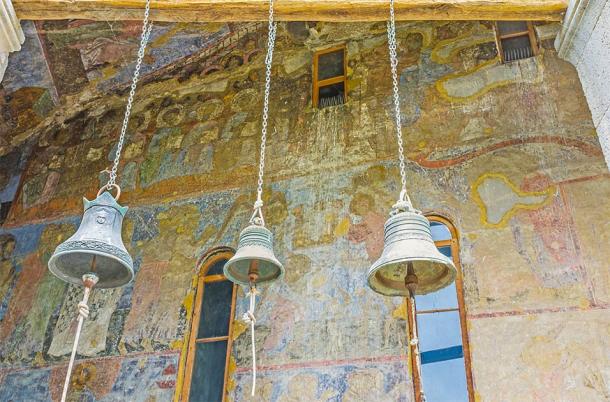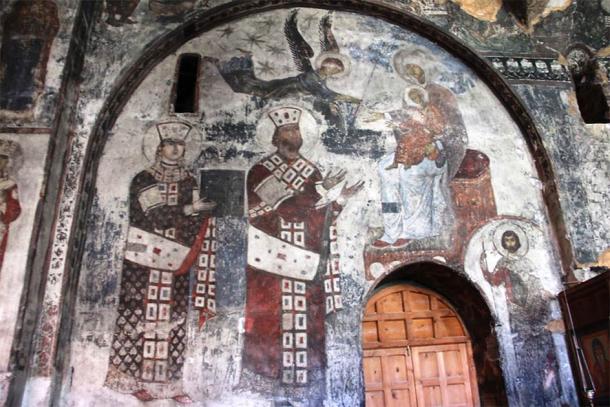The Republic of Georgia has a dramatic history stretching back centuries, partly because of its strategic position in the Caucuses, midway between Europe and Asia. Among the many attractions of this ecologically diverse country, Georgia has been producing wine for at least 8,000 years and also has a tradition of cave dwellings. One of the most remarkable of these is Vardzia, a unique cave monastery that is practically a city. This rock-cut wonder has been submitted for inclusion in the UNESCO list of World Heritage Sites.
The Rise and Fall of Vardzia, Georgia
This region has a long tradition of cave settlements. Vardzia has been occupied since the Bronze Age and may well have been inhabited even longer. Its tufa rock, a variety of limestone, is easy to work and many generations have cut and hewn the stone on the slopes of the Erusheti Mountain.
Vardzia developed into a substantial site during the Georgian Golden Age when the kingdom was a major power and witnessed an era of flourishing culture. Beginning under Giorgi III (1156 -1184), the Bagratid Dynasty patronized the development of the area and had the first cave dwellings excavated. This continued under the reign of Tamar the Great, the celebrated Queen of Georgia who had a church carved out of the rock.

The old bells of Dormition Church in Vardzia ( efesenko / Adobe Stock)
After the stunning victory of Tamar over the Seljuk Turks at the Battle of Basian (1204/5 AD), she became the most powerful monarch in the Caucasus and Anatolia. The queen commissioned more dwellings to be carved out of the rock and gave a famous icon to the church in thanks for her victory over the Turks.
The site was badly damaged by an earthquake in 1283, and the Georgian monarchs helped to restore the structures at Vardzia. Because of its position, the caves escaped the devastation of the Mongol Invasions of Georgia in the 1290s which devasted the kingdom.
The monastery flourished at the site for centuries and at its peak about 2000 people lived there. It became an important strategic site and was considered impregnable. From the beginning of the 16 th century, the Safavids, who had conquered Persia (modern Iran and Iraq), attacked Georgia. In 1551 they besieged and captured the cave city with great loss of life. Many of its icons and gospels were looted and sold in a Persian market.
During the latter half of the 16th century, the Caucuses became a battleground between the Ottomans and the Safavids and the cave city was abandoned. It was excavated during the Soviet era and partially restored. A small number of monks now live at Vardzia.
The Wonders of Vardzia
The caves are situated in a canyon through which the Mtkvari River flows and stretch over a large area of the canyon walls. The lower site is dominated by the beautiful Church of Dormition which was carved into the rock face. Its dimensions are 27 feet by 48 feet (8.2 x 14.5 m) and are almost 50 feet high (15 meters). The church contains some of the finest examples of Georgian mural art. Most of the paintings are of the monastery’s royal patrons and depict scenes of the people. The church divides the site into two parts, the eastern and the western.

One of the many murals found inside the Vardzia, with Queen Tamar on the left ( CC BY-NC 2.0 )
On the eastern side, 79 separate cave dwellings are cut into the rock face in eight tiers. There are 242 rooms in these caves, which include chapels, ‘Tamar’s room’, and various public areas such as a pharmacy and wine cellars.
The western part is just as impressive with more churches and an impressive bell tower. A further 40 cave ‘homes’ along with a bakery, a dining area, and a forge were created. There is also a burial ground which can be accessed by steps.
The slope of the Erusheti mountain was remarkably fertile and suitable for agriculture. The monks who lived inside the cave city created terraces on the mountain slope and implemented a complex irrigation system . Vardzia became one of the only medieval examples of a self-sustainable city in Europe.
Visiting Vardzia in Georgia
The cave monastery is located near Aspindza, in southern Georgia and is not far from the Turkish border. Public transport is available to the site but there is also a car park. The entry fee is paid at the ticket office.
The walk up to the site is steep and some climbing is required, but the views over the canyon are well worth the effort if you are able, and the massive cave system will not disappoint.
Top image: View of the ancient cave city, Vardzia, carved into the rock – a famous attraction of Georgia. Source: kosmos111 / Adobe Stock
By Ed Whelan
References
Okrostsvaridze, A., Mikheil Elashvili, M., Nino Popkhadze, N., & Kirkitadze, G. (2016). New data on the geological structure of the Vardzia cave city, Georgia . Bulletin Georgian National Academy of Sciences, 10(3), 98-106
Available at: http://eprints.iliauni.edu.ge/6371/
Nasmyth, P. (1998). Vardzia. In Georgia (pp. 131-135) . Palgrave Macmillan, New York
Available at: https://link.springer.com/chapter/10.1007/978-1-137-11284-2_10
Okrostsvaridze, A., Elashvili, M., & Kirkitadze, G. (2016). Unique Cave City Vardzia, Georgia: Geology, Destruction Processes and Protection Measures
Available at: http://eprints.iliauni.edu.ge/6377/1/Abs.C.C.Vardzia,%20Proc.IGCP.610-2016.pdf
Related posts:
Views: 0
 RSS Feed
RSS Feed

















 December 3rd, 2020
December 3rd, 2020  Awake Goy
Awake Goy  Posted in
Posted in  Tags:
Tags: 
















